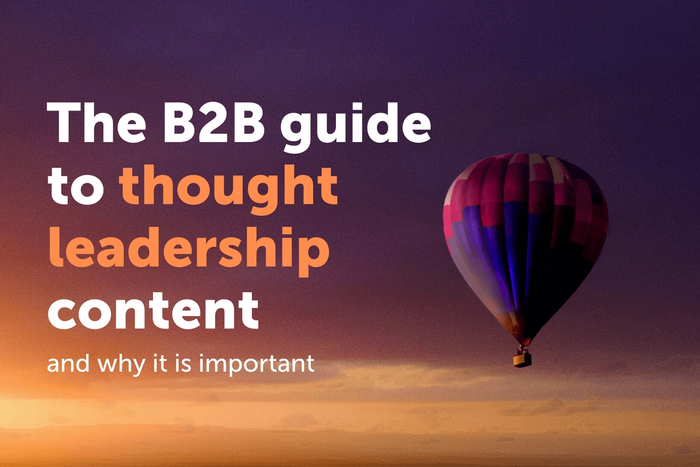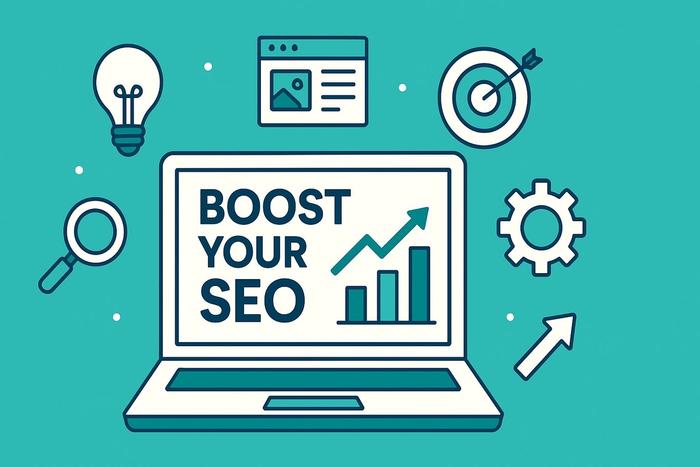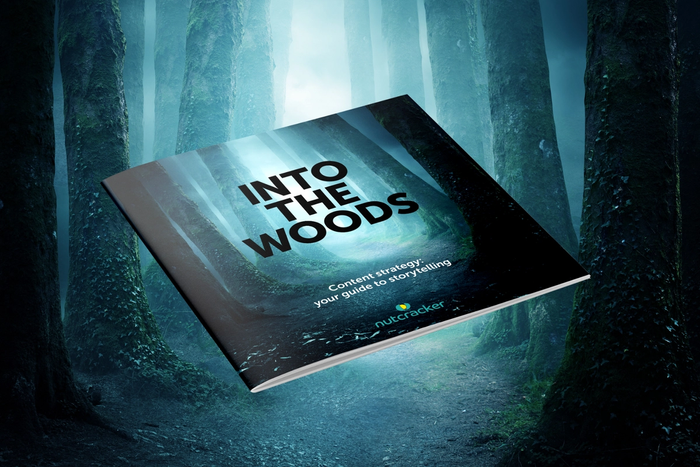Content Marketing & SEO
The role of storytelling in building a brand
Who wants to hear a story? Over 90% of people.
Research has shown that 92% of consumers prefer advertising that feels like a story. Another study found that 75% believe that brands should use storytelling in their marketing. Narrative and emotionally driven stories increase our recollection of facts, make interactions more memorable, boost motivation and generate oxytocin: the so-called ‘love chemical’ that promotes feelings of affection, empathy and trust.
But these are facts and statistics. People, as we have just established, want stories. So, let’s tell a story.
[Learn how powerful storytelling can secure market share: download the guide]
The Pepsi paradox: when facts lost to feelings
In 1975, Pepsi, a market challenger in the beverage market, launched The Pepsi Challenge, inviting consumers to blind taste test their product against industry giant Coca-Cola. Most of them chose Pepsi, kickstarting a long-running campaign whereby Pepsi ‘proved’,time and time again, that it tasted better than the market leader, Coca-Cola.
Which is why today, Pepsi is …the second highest selling carbonated water and sugar beverage in the world.
That’s right. Despite people admitting that Pepsi tastes better, Coca-Cola consistently holds the top spot when it comes to sales, by a sizeable margin. Why? Why continue to give your money to a brand despite an apparently ‘superior’ product being available?
Pepsi may have presented a great statistic in their advertising, but they couldn’t compete with Coca-Cola’s storytelling. Coca-Cola is seen as traditional, classic, nostalgic. Years of well-crafted campaigns and beautiful branding have made it synonymous with summer days, moments with family, glass bottles clinking together and smiling faces. It is unity, it is a celebration, it is friendship, it is Christmas, for pity’s sake. How do you go toe-to-toe with that?
You can’t, at least not with a statistic. ‘More people like the taste of Pepsi than Coca-Cola’ just cannot compete with the warm, fuzzy feeling of the festooned Coca-Cola lorry rolling on to your TV screen in December.
There is even an argument that stories are so powerful, they can subtly change the way we taste food or drinks (there is a fantastic article on this subject in Forbes). Perhaps Coco-Cola really does taste betterfor being wrapped in its distinctive red branding.
Either way, the nut of this story is that Pepsi’s focus on the facts was not enough to challenge the deep psychological triggers that consistent storytelling has instilled in Coca-Cola buyers. Which is why, when it comes to an impulse buy at the checkout, it’s the red can that often wins, and Coca-Cola that continues to dominate market share.
The science behind why we remember stories
This isn't just marketing folklore. Research from Stanford University shows that 63% of people remember information when it's wrapped in a story, while only 5% remember standalone statistics. Your brain isn't wired for data dumps. It's wired for narrative.
Carnegie Mellon University put this to the test with a charity appeal. When researchers presented statistics about hunger in Africa, average donations hit £0.83. When they told the story of seven-year-old Rokia from Mali who couldn't afford school meals, donations jumped to £1.73, more than double.
Here's the twist: when they combined both story and statistics in one appeal, donations dropped back down to £1.04. Too many facts actually killed the emotional connection.
The numbers don't lie:
- 92% of consumers prefer ads that feel like stories rather than sales pitches
- Storytelling can increase perceived product value by 30%
- Stories generate 22x more social media sharing than fact-based content
Your customers aren't walking spreadsheets. They're humans who make decisions with their hearts first, then justify with their heads later.
Four brand storytelling examples we've loved in 2024-2025
The brands that chose stories over stats (and won)
Talk is cheap. Let's look at brands that actually put storytelling into practice in 2024 and 2025 and got results you can measure.
Nike: "Winning isn't comfortable" (September 2024)
Nike could've made another ad about their latest running shoe technology. Cushioning specs. Weight measurements. Performance data.
Instead, they showed you what 5am looks like when you're a runner. Rain-soaked mornings. Sore muscles climbing stairs. The loneliness of pushing your body when everyone else is still asleep.
The three-film campaign "Sunshine," "Morning," and "Stairs" featured everyday runners, not Olympic athletes. No podiums. No glory shots. Just the uncomfortable truth that winning starts long before anyone's watching.
Results? 850 million global views. 82% of viewers felt Nike authentically understood running culture. And a 90% spike in searches for Nike running products.
Nike didn't sell shoes. They sold the feeling of being a runner.
Levi's: "Chapter 1: Launderette" with Beyoncé (2024)
When Beyoncé released her "Cowboy Carter" album, Levi's didn't just sponsor it. They reimagined their iconic 1985 "Launderette" commercial with Beyoncé as the star, wearing the same 501s that made the original ad legendary.
This wasn't a celebrity endorsement for the sake of it. Beyoncé grew up wearing Levi's. The denim connection was real. The story was authentic.
The campaign worked because it honoured legacy while making it relevant for a new generation. Gen Z discovered why their parents wore 501s. Millennials felt nostalgic. Everyone talked about it.
Levi's could've led with "premium denim, iconic fit, made in America." Instead, they let the story of an icon wearing an icon do the talking.
Pizza Hut: "Saucy AF" (2024)
Here's where storytelling gets weird in the best way.
An AI-generated video of a fake pizza brand called "Saucy AF" went viral. Instead of ignoring it or sending cease-and-desist letters, Pizza Hut did something brilliant: they made it real.
Leo Burnett Toronto helped Pizza Hut temporarily transform actual locations into "Saucy AF" restaurants, complete with the AI-generated branding, menu items, and marketing materials.
The meta-storytelling turning fiction into reality generated 20 million impressions in 48 hours and a 78% jump in organic reach. It won the 2024 Webby Award for Best Branded Content.
Pizza Hut didn't tell you their pizza was better. They showed you they understood internet culture and weren't afraid to have fun with it.
Rhino Rugby: "A ball for the planet" (2024)
Most rugby ball manufacturers hide the fact their products are made in India. Rhino owned it.
Their "A Ball for the Planet" campaign told the story of Khelo Rugby in Kolkata a project helping street kids stay in education through rugby. The documentary-style content showed how Rhino's recycled rugby balls (80% recycled rubber) are made while spotlighting real communities.
Instead of shouting "we're sustainable," they showed you the faces of the people making sustainability possible.
The results weren't just feel-good: 17% increase in global sales of recycled balls, a Silver Award at the International Content Marketing Awards, and commitments from France, the UK, and Asia Rugby to switch to recycled options.
Rhino turned a potential weakness (manufacturing location) into their biggest strength. That's storytelling.
The pattern you can't ignore
Notice what these brands didn't do:
They didn't lead with product specs. They didn't bombard you with statistics. They didn't tell you why they're better than competitors.
They showed you something true. Something human. Something that made you feel first and think second.
That's not an accident. That's strategy.
Why your brain chooses stories over statistics
Your brain isn't being irrational when it ignores facts in favour of stories. It's actually being efficient.
When someone presents you with data, only two areas of your brain light up: Broca's area and Wernicke's area. These handle language processing. You decode the words, file the information, and move on. Chances are, you'll forget it within hours.
When someone tells you a story, your entire brain activates. The sensory cortex processes the sights and sounds. The motor cortex feels the movement. The emotional centres, your amygdala and hippocampus, start firing. Your brain doesn't just process the story. It experiences it.
This is why you can remember every plot point from a film you watched five years ago but can't recall three statistics from a presentation you sat through last week.
The empathy effect
Here's where it gets interesting for marketers.
When you hear a story, your brain releases oxytocin the same chemical that bonds mothers to babies and makes you trust people. Princeton University researchers discovered something they call "neural coupling": when someone tells you a story, your brain patterns start mirroring theirs.
You're not just listening. You're syncing.
This is why the Save the Children study worked. When researchers showed people statistics about African hunger, oxytocin levels stayed flat. When they told the story of Rokia, oxytocin spiked. The story triggered empathy. Empathy triggered action. Action meant donations doubled.
Facts inform. Stories transform.
Why combining facts and stories backfires
Remember how combining statistics with Rokia's story actually decreased donations? That's called the "drop in the bucket effect."
When you mix hard data with human stories, the logical brain takes over. People start calculating. "If millions are suffering, my small donation won't matter." The emotional connection breaks. The oxytocin fades. The wallet stays closed.
Your customers do the same thing. Lead with a product spec sheet, then add a customer testimonial? The testimonial loses its power. The spec sheet makes them think instead of feel. And when people think, they hesitate. When they feel, they act.
This doesn't mean abandon facts entirely. It means sequencing matters. Story first, facts second. Emotion first, logic second. Make them care, then give them the rational justification they need to say yes.
Stories as mental shortcuts
Your brain processes 11 million bits of information per second. Your conscious mind can handle about 40.
To cope, your brain creates shortcuts, patterns, narratives, and stories that help you make sense of chaos without drowning in data. When a brand tells you a coherent story, you don't have to work hard to understand them. The story does the heavy lifting.
This is why Coca-Cola won. They gave people an easy story to remember: "Coke equals happiness." Pepsi gave people a complicated math problem: "We taste better in blind tests but you still choose the other brand."
Your customers are busy. Distracted. Overwhelmed. They don't want to solve puzzles. They want stories that make sense instantly.
Give them that, and they'll remember you when it's time to buy.
How to tell brand stories that actually sell
Knowing storytelling works is useless if you don't know how to do it. Here's the framework that turns theory into practice.
Step 1: find your customer's struggle (not your product's features)
Stop talking about what you make. Start talking about what your customer faces.
Nike didn't talk about shoe cushioning. They talked about the struggle of waking up at 5am when your bed is warm and your legs are sore. Rhino didn't talk about recycled rubber percentages. They talked about kids in Kolkata fighting for education.
Your story doesn't start with your product. It starts with your customer's problem, fear, or aspiration.
Ask yourself: What keeps my customer awake at 3am? What are they trying to become? What obstacle stands in their way?
That's your story's opening.
Step 2: position your customer as the hero (not your brand)
This is where most brands get it wrong. They make themselves the hero of the story.
"We're the leading provider of..." "Our award-winning team developed..." "We've been revolutionising the industry since..."
Nobody cares. Your customer doesn't want to hear about your heroic journey. They want to see themselves winning.
You're not the hero. You're the guide. Think Yoda, not Luke Skywalker. Think Morpheus, not Neo.
Coca-Cola didn't say "We make the best cola." They said "Here's how happiness feels, and we're the drink in your hand when you experience it."
Your brand exists to help your customer achieve something. Make that your focus.
Step 3: show the transformation (with real evidence)
Every good story has a before and an after. Your customer starts in one place and ends in another, better place. Your brand is the bridge between those two states.
But here's the critical part: the transformation has to feel real.
Pizza Hut didn't just claim they understood internet culture. They proved it by literally building a fictional brand in real life. Levi's didn't just say they're iconic. They showed it by bringing back their most famous ad with one of the world's biggest cultural figures.
Don't tell people your brand changes lives. Show them someone whose life actually changed. Use real names. Real numbers. Real outcomes.
Vague claims like "increase productivity" or "transform your business" mean nothing. "Sarah reduced her team's admin time by 14 hours per week" means everything.
Step 4: make it sensory (not abstract)
Your brain remembers details, not concepts.
Compare these two sentences:
- "Our platform improves efficiency."
- "Instead of chasing invoices through fifteen email threads, you click once and see exactly who owes you money."
The second one puts you in the moment. You can see the email threads. Feel the frustration. Imagine the relief.
Nike showed rain. Sore legs. Stairs that feel like mountains. They didn't say "running is hard work." They made you feel what hard work feels like at 5am.
Use concrete images. Specific moments. Sensory details that let people experience the story instead of just reading about it.
Step 5: stay authentic (or people will smell the BS)
This is non-negotiable.
Beyoncé wearing Levi's worked because she actually grew up wearing them. If they'd partnered with someone who'd never touched denim before, it would've felt hollow.
Your story has to be true. Not "technically accurate" or "based on a true story." Actually true.
Customers have finely tuned BS detectors. They know when you're fabricating emotion to manipulate them. They know when your values are just marketing copy rather than actual belief systems.
Tell real stories about real customers. Share genuine challenges your business faced and how you solved them. Admit when things went wrong before they went right.
Authenticity isn't a tactic. It's the foundation everything else is built on.
Step 6: create a clear next step (without being pushy)
Stories should lead somewhere. But the transition from story to action has to feel natural.
After Nike made you feel what it's like to be a runner, they didn't hard-sell you shoes. They simply reminded you that Nike makes gear for people like you. The call to action was implicit: "If you're this person, we're your brand."
Your story should make the next step obvious without being transactional. If you've told the story well, your customer already knows what to do next. Your job is just to make it easy.
Don't end with "Buy now!" End with "Here's how we help people like you" followed by a simple way to continue the conversation.
What businesses can use storytelling in marketing?
Consumer brands have been using storytelling to connect with audiences for decades, even centuries. Victorian-era advertising was rife with emotive language and imagery, narratives that wove compelling stories around even the most mundane products (Pears soap, and their innovative use of influencer marketing with actress Lillie Langtry, is a great example of this).
The 1950s-60s saw the golden age of advertising, with brands striving to strike that emotional resonance with their consumers despite having limited opportunities to connect with them. When one billboard and a strong brand were all marketers had to work with, the story became everything.
Today, storytelling continues to be a core tenet of consumer marketing. With more avenues to share those stories than ever before, brands are spinning omnichannel narratives that combine social media, video, written content, immersive experiences and influencers, creating narratives that buyers live and breathe.
Think of storytelling as your brand's fully immersive experience
Think of a brand like Red Bull that has turned marketing into a fully immersive narrative experience, with sprawling content strategies and complex lifestyle connections (such as their involvement in alternative sports and racing) that make them more than just a logo on a product.
Yet storytelling is not just for consumer products. Whether you’re selling to an individual or to a business, your decision-maker is still a human being. When we go to work, we don’t leave our emotions at the door.
We feel all the same things we do in the rest of our lives: happiness, sadness, frustration, anger, joy, triumph, and even love. The only difference is that we are at work, not scrolling on our phones in our sitting room.
All of those incredible outcomes from storytelling – boosted memorability, empathy, affection, motivation – still apply whether you are selling a can of drink or a SaaS subscription. The methods may need to be slightly different (you have to connect with far more stakeholders when you’re selling B2B than B2C, but Nutcracker can help you to streamline that B2B sales strategy) but the power of storytelling remains the same.
Make storytelling part of your sales strategy
There is scientific evidence to suggest that storytelling can commercially benefit your brand, but creating a consistent and compelling story that actually works isn’t easy. It has to be strategic, creative and targeted.
If you’re interested in finding out how to make storytelling part of your marketing strategy — and importantly, how to get it to drive real results for your business — download our guide.
Claiming market share: a proven, practical approach to growth, even in a tough market.
Your questions about brand storytelling, answered
Q: Does storytelling actually work for B2B brands, or is this just a B2C thing?
B2B buyers are still humans. They still make emotional decisions and justify them with logic later.
The mistake B2B brands make is thinking "professional" means "boring." It doesn't. Rhino sold rugby balls to procurement managers at national rugby unions by telling stories about kids in Kolkata. Mailchimp's Bloom Season featured real entrepreneurs struggling with real problems. Both campaigns worked because they understood something simple: behind every business decision is a person who responds to stories.
The difference isn't whether storytelling works in B2B. It's what stories you tell. B2B stories focus on professional challenges, career risks, and business outcomes. But the structure stays the same: struggle, transformation, resolution.
Check out our B2B storytelling campaign that drove Comma's growth story to see how companies like yours can do this successfully.
Q: How long should a brand story be?
Long enough to create an emotional connection. Short enough that people actually finish it.
Nike's "Winning Isn't Comfortable" films were 60-90 seconds each. Rhino's documentary-style content ran longer because the format demanded it. Pizza Hut's stunt played out in real-time over 48 hours.
The format matters less than the focus. One clear story told well beats three stories crammed into the same space.
For social media, aim for 30-90 seconds of video or 150-300 words of text. For long-form content, you can stretch to 3-5 minutes or 800-1,200 words if every sentence earns its place.
If you're losing people halfway through, your story isn't too long. It's too boring.
Q: What if our product is genuinely better than competitors? Shouldn't we lead with facts?
Your product might be objectively superior. Your customers still won't care until you make them care.
Pepsi tasted better in blind tests. They lost anyway. Technical superiority doesn't create emotional attachment. Stories do.
Here's the play: lead with story, follow with facts. Make them feel something first, then give them the rational ammunition they need to justify their emotional decision to themselves (and their boss, spouse, or board).
The story gets them interested. The facts give them permission to act on that interest.
Q: Can you measure ROI on storytelling, or is this all "brand awareness" fluff?
Every campaign mentioned in this article has measurable results:
- Nike: 850 million views, 90% increase in product searches
- Pizza Hut: 20 million impressions in 48 hours, 78% jump in organic reach
- Rhino: 17% sales increase in recycled balls
Brand storytelling isn't some unmeasurable art project. It's a strategy that drives specific outcomes: awareness, engagement, conversion, loyalty.
Track what matters to your business. If you're running storytelling content on social media, measure watch time, shares, and comment sentiment. If you're using stories in sales, track how many prospects move to the next stage. If you're creating customer testimonial stories, measure conversion rate changes.
The metrics exist. You just have to decide what success looks like before you start.
Q: What's the difference between a brand story and a marketing campaign?
Your brand story is the overarching narrative about who you are, what you stand for, and why you exist. It's the through-line that connects everything you do.
A marketing campaign is a specific execution of that story for a particular goal, audience, or time period.
Think of it like this: Coca-Cola's brand story is "we create moments of happiness and togetherness." Their campaigns might focus on Christmas, sports events, or summer refreshment, but they all lead back to that core narrative.
Your brand story stays consistent. Your campaigns adapt it to different contexts.
Q: We're a small business without Nike's budget. Can we still do storytelling?
Nike's budget bought distribution, not the story itself. The story of everyday runners struggling through uncomfortable mornings costs nothing to conceive.
Your advantage as a small business is authenticity. You can tell founder stories, customer stories, and behind-the-scenes stories that massive corporations can't pull off without seeming manufactured.
Start with what you have:
- Film a customer explaining how your product solved their problem (smartphone camera, 2 minutes)
- Write about why you started your business and what problem you were trying to solve (blog post, 800 words)
- Show your process, your team, your values in action (Instagram Stories, LinkedIn posts)
Storytelling isn't about production value. It's about emotional truth. You don't need a film crew for that.
Q: How do we find stories worth telling?
Your customers are living them right now.
Talk to the customer who almost didn't buy from you but took a chance. Ask what changed. That's a story about overcoming objections.
Find the client who got unexpected results from your product. Ask what happened. That's a story about transformation.
Look at your own business. What almost went wrong? What did you learn the hard way? What do you believe that your competitors don't? Those are stories about values and differentiation.
The stories are there. You're just too close to them to see how interesting they are.
Here's our guide on identifying your target audience, because the best stories come from deeply understanding who you're talking to.
Q: Should every piece of content we create be story-based?
No. Sometimes people just need information.
If someone's searching "how to change a tyre," they don't want a hero's journey. They want clear instructions.
But when you're competing for attention, building trust, or creating an emotional connection, that's when storytelling wins. Use it strategically, not universally.
Think of storytelling as the tool that makes people care enough to want the facts.
See storytelling in action
Words can only do so much. Sometimes you need to see storytelling work in real-time.
We've embedded Nike's "Winning Isn't Comfortable: Morning" film below. Watch how they turn a simple morning run into something emotionally resonant without saying a single word about shoe technology.
Notice what they don't do:
- No product shots until the final frame
- No voiceover explaining why Nike is better
- No statistics about performance improvements
What they do instead: show you struggle, discomfort, and the quiet determination that makes someone a runner. By the time the Nike logo appears, you already feel connected to the brand.
That's storytelling.
The Bottom Line
Facts might win arguments in boardrooms. But stories win hearts, minds, and wallets in the real world.
Pepsi had better taste test results. Coca-Cola had better stories. You know who won.
Your product might have superior features. Your service might deliver measurable ROI. Your team might have decades of expertise. None of that matters until you make someone care. And the fastest way to make someone care is to tell them a story that resonates with their experience, aspirations, or struggles.
The brands crushing it right now aren't the ones with the biggest budgets or the most advanced technology. They're the ones brave enough to lead with human truth instead of corporate speak.
Nike showed you what 5am feels like for a runner. Levi's reminded you why denim matters across generations. Pizza Hut proved they understand internet culture. Rhino turned a manufacturing location into a mission.
None of those stories required revolutionary products. They required the courage to be honest about what actually matters to customers.
Your brand has stories worth telling. Your customers have transformations worth sharing. Your challenge isn't finding material. It's finding the focus to tell one story brilliantly instead of ten stories adequately.
Facts tell. Stories sell. The question is: which one are you leading with?
Want help crafting stories that actually convert? Our team at Nutcracker specialises in content strategy that turns brand narratives into measurable results. We've helped everyone from scrappy startups to established B2B brands find their story and tell it in ways that move the needle.
Download our guide to content marketing that connects or talk to us about your brand story. Because the best time to start telling better stories was five years ago. The second-best time is right now.
Author Bio
Charlotte Delaney is a seasoned marketing professional and the Head of Content at Nutcracker, a B2B marketing agency specialising in supporting fast-growth companies. With a passion for demystifying complex marketing concepts, Charlotte draws on her extensive experience working with clients in the technology and financial sectors.
She has a proven track record of developing data-driven content strategies that drive tangible business results. Her expertise lies in connecting brand narratives to current cultural moments, a skill she applies to help businesses create campaigns that are both relevant and impactful. You can connect with her on LinkedIn.
Share this:





